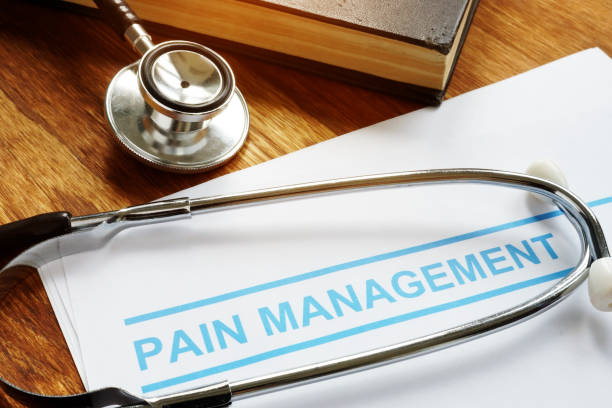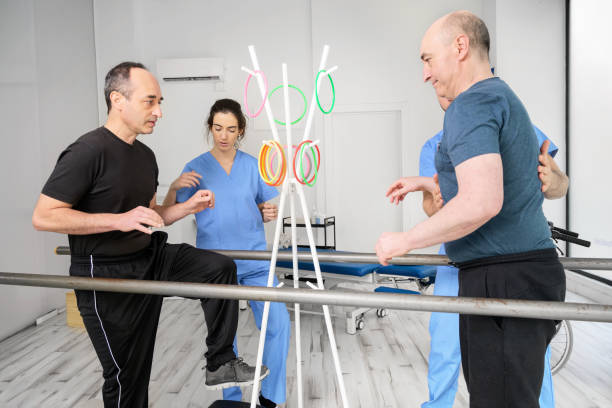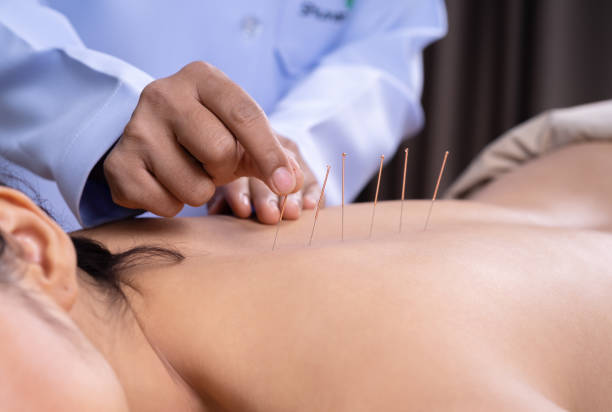Comparing Interventional vs. Non-Interventional Pain Management: Key Differences Explained
Chronic pain can be debilitating, affecting every aspect of a person’s life. Fortunately, various pain management approaches are available to help individuals regain control and improve their quality of life.
Two common approaches to managing chronic pain are interventional and non-interventional pain management. Understanding the differences between these two approaches is crucial for chronic pain patients in making informed decisions about their treatment.
Without much ado, let’s explore the two approaches to chronic pain management.

Non-Interventional Pain Management
Doctors typically initiate the treatment of chronic pain by employing non-interventional procedures to offer relief before resorting to more aggressive treatments.
The objective of non-interventional pain management is to achieve relief from chronic pain without the necessity of piercing or cutting the skin through injections or surgical procedures.
Certain non-interventional procedures rely on the use of pharmacological (drug) treatments. Although medication can alleviate various types of pain, there are also techniques for non-interventional (non-invasive), medication-free pain management.
Types of Non-Interventional Pain Management Procedures
Non-interventional pain management procedures are also dubbed non-invasive procedures
These approaches are divided into non-invasive pharmacological and non-drug pain management procedures.
Non-Invasive Pharmacological Pain Management Procedures
Pharmacological chronic pain management entails the use of pharmacological treatments alone or together with varied chronic pain treatment options. Pharmacological interventions include prescription and over-the-counter medications like the following:
- Corticosteroids – These are cortisone-like medicines that relieve itching, redness, swelling, and allergic reactions.
- Antidepressants and anti-seizure medications – These help relieve or reduce nerve pain.
- Muscle relaxants – These relieve pain caused by muscle spasms.
- Acetaminophen (analgesics) like Tylenol.
- Nonsteroidal anti-inflammatory drugs (NSAIDs) like aspirin, naproxen (Aleve), and ibuprofen (Advil).

Non-Invasive Non-Drug Pain Management procedures
Here are some of the most effective non-invasive non-drug methods for pain management:
Acupuncture
Acupuncture is an ancient Chinese healing technique that involves inserting thin needles into specific points on the body. This can help to stimulate nerves, muscles, and connective tissue, which may boost the body’s natural painkillers and increase blood flow.
Biofeedback
Biofeedback is a technique used to help individuals learn how to control physical responses, such as muscle tension and heart rate, to reduce pain. Electronic monitoring helps you gain awareness and control over normally involuntary bodily functions.
Cold and Heat
The application of cold and heat can be an effective way to manage pain. Cold therapy can reduce inflammation and swelling, while heat therapy can increase blood flow and relax muscles, providing relief from pain.
Chiropractic Treatments
Chiropractic care involves adjustments to the spine and other parts of the body to alleviate pain and improve function. It can be particularly beneficial for back and neck pain.
Deep Breathing/Meditation
Deep breathing and meditation techniques can help relax the mind and body, reducing stress and tension that contribute to pain. These practices can also improve overall mental well-being.
Exercise
While it may seem counterintuitive, regular physical activity can help manage chronic pain. Exercise can strengthen muscles, improve flexibility, and release endorphins, which are the body’s natural painkillers.
Massage
Massage therapy can help reduce muscle tension, improve circulation, and promote relaxation, all of which contribute to pain relief. It can be especially beneficial for those dealing with muscle or joint pain.
Shiatsu (Finger Pressure Therapy)
Originating from Japan, shiatsu is a form of massage that involves applying pressure to specific points on the body. This pressure can help alleviate pain and promote relaxation.
Music Therapy
Music has been shown to have a positive impact on pain perception. Listening to calming music can help distract from pain and promote a sense of well-being.
Physical and Occupational Therapy
These therapies focus on improving mobility, function, and independence. They can help individuals manage pain by addressing physical limitations and adapting daily activities.
Transcutaneous Electrical Nerve Stimulator (TENS)
A TENS unit delivers small electrical impulses to specific nerve pathways, which can help disrupt pain signals and provide relief. It is a non-invasive and drug-free method of pain management.
Yoga and Tai Chi
These mind-body practices incorporate gentle movements, breathing techniques, and meditation to improve physical and mental well-being. They can be effective in reducing pain and improving overall flexibility and strength.
Support Groups
Connecting with others who are experiencing similar pain can be incredibly beneficial. Support groups provide emotional support, share coping strategies, and offer a sense of community, all of which can help in pain management.

Interventional Pain Management
Also referred to as invasive pain management, interventional pain management entails using a multidisciplinary approach to relieve or manage a patient’s overall quality of life through minimally invasive techniques.
Below are the most prevalent used interventional pain management techniques:
Radiofrequency Nerve Ablation
Radiofrequency Nerve Ablation is a minimally invasive procedure that can provide long-lasting relief for chronic pain. This technique uses heat generated by radio waves to target specific nerves and disrupt their ability to transmit pain signals. By “turning off” the targeted nerves, you can experience significant pain reduction, allowing you to engage in activities that were previously limited by pain.
Discography
Discography is a diagnostic procedure that involves injecting contrast dye into the discs of the spine to identify the source of back pain. This technique helps pinpoint the specific disc or discs that are causing your pain, allowing for more targeted and effective treatment options.
Percutaneous Discectomy/Nucleoplasty
Percutaneous Discectomy/Nucleoplasty is a minimally invasive procedure that aims to relieve pain caused by herniated discs. During this procedure, a special device is used to remove or shrink the herniated portion of the disc, reducing pressure on the surrounding nerves and alleviating pain. This can be especially beneficial for individuals who want to avoid more invasive surgical options.
Injections
Injections, including steroid injections and nerve blocks, are commonly used to reduce inflammation and alleviate pain in specific areas of the body. These injections can provide temporary relief from pain and allow you to engage in physical activity with greater ease.
Pain Pump
A Pain Pump, or intrathecal drug delivery system, is a device that delivers medication directly to the spinal cord. This targeted approach to pain management can provide effective relief with smaller doses of medication, minimizing potential side effects and improving your overall comfort.
Nerve, Root, and Medial Branch Blocks
Nerve, root, and medial branch blocks are techniques used to target and block pain signals from specific nerves in the body. By interrupting these pain signals, these blocks can significantly reduce your experience of chronic pain and help you stay active and engaged in the activities you love.
Rhizotomy
Rhizotomy is a procedure that uses heat or cold to disable the nerves responsible for sending pain signals to the brain. By disrupting these pain signals, rhizotomy can provide long-lasting relief for individuals dealing with chronic pain.
Spinal Cord Stimulation
Spinal Cord Stimulation is a technique that involves implanting a small device near the spinal cord to deliver electrical impulses. These impulses interfere with the transmission of pain signals, effectively masking the perception of pain and allowing you to participate in physical activities with reduced discomfort.

Bottom Line
Understanding the difference between interventional and non-interventional pain management is crucial for chronic pain patients seeking effective treatment options. Both approaches have unique benefits and considerations, and the decision on which path to pursue should be made in consultation with qualified healthcare professionals.
Ultimately, both approaches have been proven helpful in managing chronic pain symptoms, improving function, and enhancing the overall quality of life. By working with your healthcare provider to explore these techniques, you can find a personalized approach to pain management that meets your unique needs and allows you to continue pursuing the activities that bring you joy.
Looking to stay healthy without breaking the bank? Don’t look any further.
Subscribe to Kloud Iron’s 28-day fitness program and begin your journey toward optimal mental health and physical fitness. To learn more about Kloud Iron Fitness Hub’s offers, contact us today or message/follow us on Facebook and Instagram. We are also available on YouTube.


Leave Your Comment